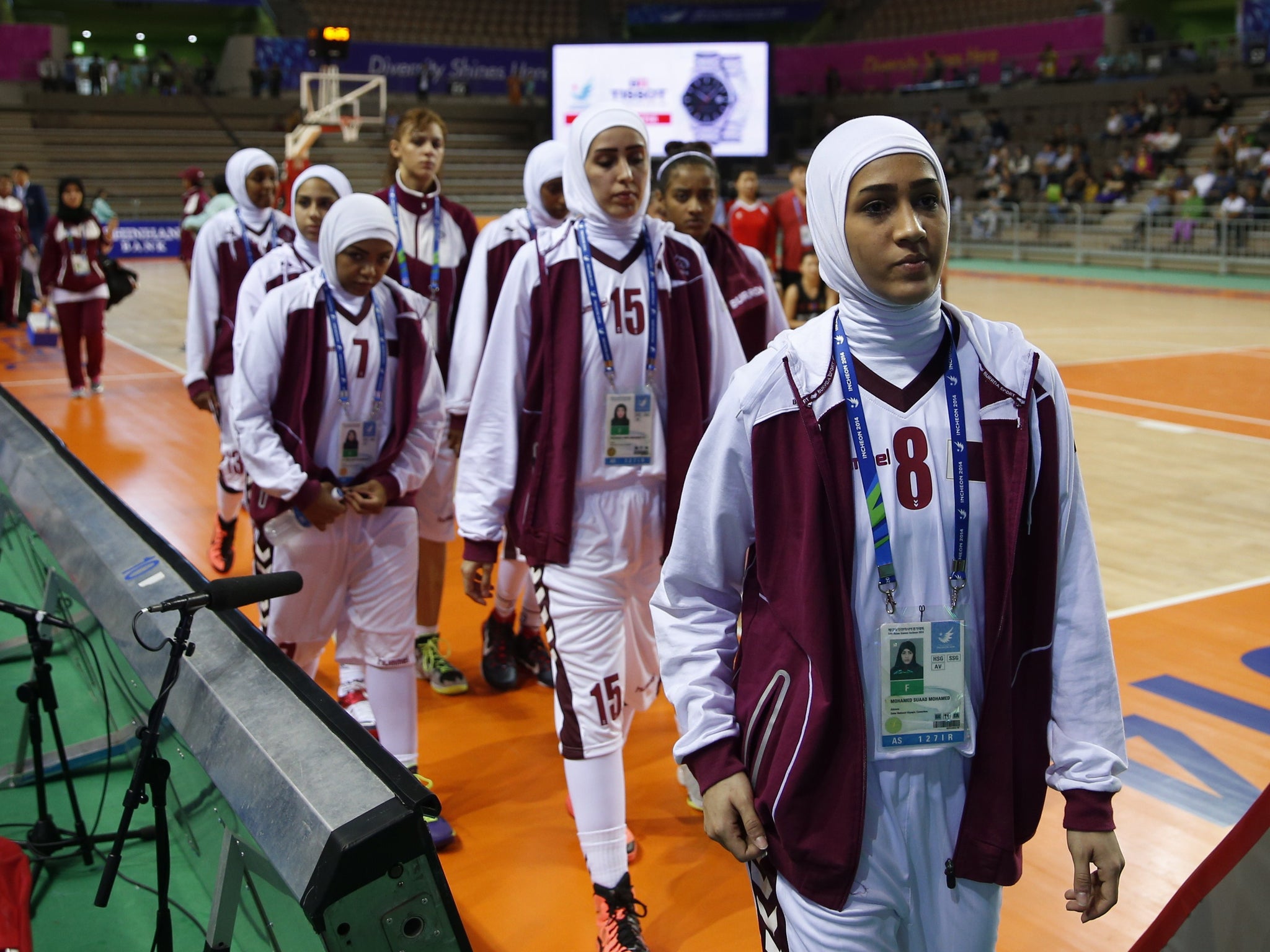There was no reason to bar Qatar's female basketball team from the Asian Games
There's a time and a place for banning religious headgear, and this wasn't it


As Britain enters yet another war against a Muslim enemy, the ongoing culture wars between the Ummah – the world Islamic community – and the rest heated up a notch yesterday with the refusal of the Qatar women’s basketball team to doff their hijabs at the Asian Games – official slogan “Diversity Shines Here” – in Korea.
By insisting on playing in hijabs, team members were in breach of rules that ban players from wearing headgear. Neither side refused to budge, and the team headed home.
Meanwhile, the decision by the liberal Camden School for Girls in London to bar a niqab-wearing girl from studying in the sixth form prompted more than a thousand people to sign a petition in protest. Call them the Veil Wars. They are raging all over the world, and all of us find ourselves on one side or the other.
For a long time, the progressive assumption in the West was that the obligation on women to cover their flesh was a stark assertion of patriarchal values which treated women as chattels. These, we were sure, were the customs of benighted folk deprived of the European enlightenment and everything it brought in its train, feminism included.
Under Afghanistan’s puritanical Taliban rulers women were severely punished for not wearing burkas out of doors. The liberation supposedly brought by the US with its Afghan invasion of 2001 was symbolised by women tearing off those wretched powder blue tents and stepping out freely.
My first intimation that things were not simple as that came 10 years earlier, in Yemen, where burkas were almost as common as in Kabul. Western women friends of mine took to wearing them to avoid being leered at, and loved the sense of freedom that the asexual anonymity of the garment provided.
Of course that was in a society where the sight of women with any flesh at all on show was so unusual as to be provocative. After a couple of weeks in the place I began to find my attention riveted by women’s ankles – the only part of their body that was visible. And the spectacle of burka-clad women checking out the stock in a shop that sold nothing but burkas had a fascination all of its own.
But the cultural significance of flesh-covering is quite different in countries such as Britain or South Korea where leering by sensorily-deprived men is far less widespread. Take away the patriarchal, hyper-religious context and the leering men of the Muslim world and flesh and hair covering become a symbol of Muslim cultural solidarity. And the greater the level of anti-Muslim paranoia and hostility, the greater its potency as an expression of pride and defiance – regardless of the wearer’s views about terrorists such as Isis.
It is not surprising that many British people have hostile reactions to the niqab and the burka. These garments cut across centuries of what we regard as progress. The idea that they have anything to do with feminism seems grotesque. We need to recognise them, not as assertions of profound alienness and estrangement but as badges of cultural pride. But that doesn’t mean blanket acceptance.
There are no rational grounds for barring the hijab from sporting events such as basketball: that is just sluggish, probably bigoted, bureaucracies refusing to change with the times. There are, on the other hand, excellent grounds for keeping the niqab out of classrooms and courts of law. Bare faces are basic to the way these places need to work. Teachers and students and judges and plaintiffs cannot do their jobs in the dark.

Join our commenting forum
Join thought-provoking conversations, follow other Independent readers and see their replies